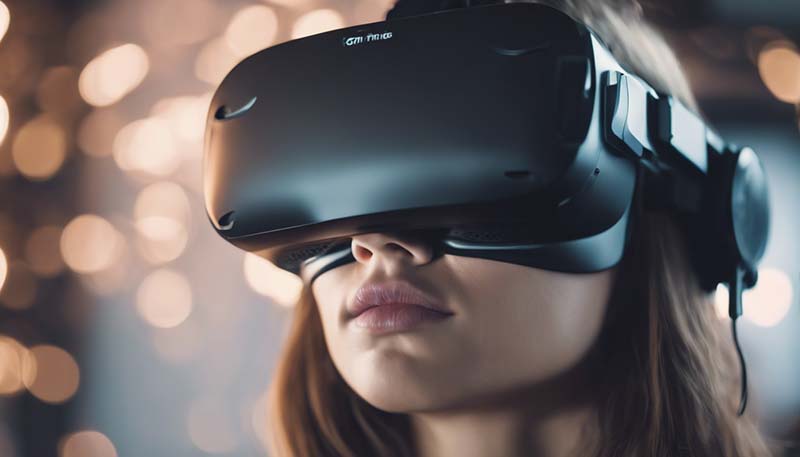The Role of Virtual Reality in Machine Learning
Introduction
Virtual Reality (VR) and Machine Learning (ML) are two rapidly advancing fields that are increasingly intersecting.VR provides immersive experiences by simulating environments that users can interact with in a seemingly real way.Machine Learning,on the other hand,is a subset of artificial intelligence (AI) that involves the development of algorithms and statistical models that enable computers to perform tasks without explicit instructions,relying instead on patterns and inference.This article explores the role of VR in ML,the benefits,challenges,and potential future developments in this exciting intersection of technology.
The Synergy Between VR and ML
The synergy between VR and ML is based on their complementary strengths.VR offers a platform for generating vast amounts of data,which can be used to train ML models.ML,in turn,can enhance the VR experience by enabling more intelligent and adaptive virtual environments.Here are some key areas where VR and ML intersect:
1.Data Generation and Training
VR environments can generate large datasets that are rich in sensory information,including visual,auditory,and haptic feedback.These datasets can be used to train ML models for various tasks such as object recognition,gesture recognition,and natural language processing.The immersive nature of VR also allows for the collection of data that is difficult to obtain in the real world,such as extreme or rare events.
2.Adaptive and Intelligent Environments
ML can be used to create more adaptive and intelligent VR environments.For example,ML algorithms can be used to predict user behavior and adjust the virtual environment accordingly.This can lead to more personalized and engaging experiences.Additionally,ML can be used to create non-player characters (NPCs) in VR with more complex and human-like behaviors.
3.User Interaction and Experience
ML can enhance user interaction in VR by improving gesture and voice recognition,enabling more natural and intuitive control of virtual environments.This can lead to more immersive and enjoyable experiences for users.ML can also be used to analyze user behavior and preferences to provide personalized content and recommendations within VR environments.
4.Healthcare and Rehabilitation
VR and ML are being used together to develop new approaches to healthcare and rehabilitation.For example,VR can be used to simulate realistic medical scenarios for training purposes,while ML can be used to analyze the performance of trainees and provide feedback.In rehabilitation,VR can provide a controlled and adaptable environment for patients to practice motor skills,while ML can be used to track progress and adjust the difficulty of the tasks accordingly.
Challenges and Limitations
While the combination of VR and ML offers many benefits,there are also challenges and limitations to consider:
1.Data Privacy and Security
The large amounts of personal data generated by VR environments raise concerns about data privacy and security.It is essential to ensure that user data is collected,stored,and processed in a way that respects privacy and complies with relevant regulations.
2.Computational Requirements
The processing and analysis of the large datasets generated by VR environments can be computationally intensive.This requires powerful hardware and efficient algorithms to enable real-time interaction and feedback in VR.
3.User Acceptance and Ethical Considerations
There may be resistance from users to the idea of their data being used to train ML models,particularly if they are not fully informed about how their data will be used.It is important to address these concerns through transparent communication and ethical practices.
Future Developments
The intersection of VR and ML is a rapidly evolving field with many potential future developments.Some possible areas of growth include:
1.Enhanced Realism in VR
As ML algorithms become more sophisticated,they can be used to create more realistic and immersive VR experiences.This could include more accurate simulations of physical phenomena,such as lighting,weather,and material properties.
2.Personalized Learning and Training
VR and ML can be used together to create personalized learning and training experiences.By analyzing user performance and adapting the content and difficulty level accordingly,VR can provide a more effective and engaging learning experience.
3.Integration with Other Technologies
The combination of VR and ML can be further enhanced by integrating with other emerging technologies,such as augmented reality (AR),the Internet of Things (IoT),and 5G networks.This could lead to new applications and use cases in areas such as remote collaboration,smart cities,and connected healthcare.
Conclusion
The integration of Virtual Reality and Machine Learning is a promising area of development with the potential to transform a wide range of industries and applications.As the technology continues to advance,it will be important to address the challenges and ethical considerations associated with the use of VR and ML.By doing so,we can unlock the full potential of these technologies to create more engaging,personalized,and intelligent experiences for users.
Comment